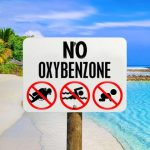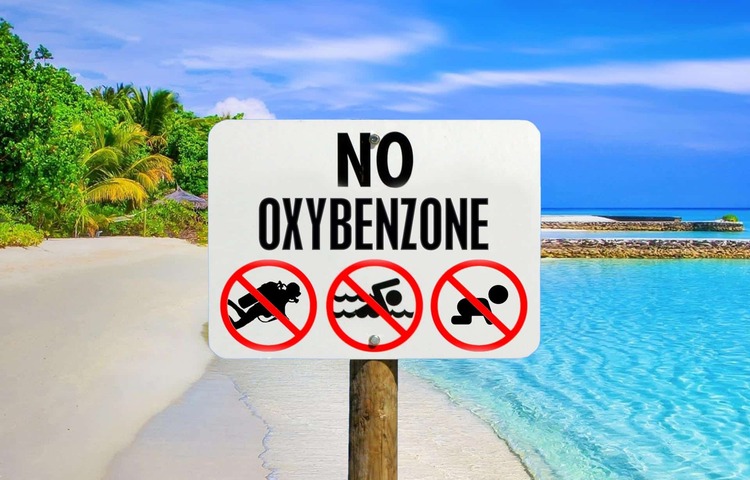Oxybenzone in Sunscreens: A Cause of Concern?
Formulations

Oxybenzone has been a highly popular constituent of sunscreens since the 1960s due to its ability to absorb UVA and UVB radiation. It absorbs UV rays and prevents them from penetrating and damaging deeper layers of the skin

Many Facets of the Broad-Spectrum Chemical Filter
Oxybenzone, a benzophenone derivative has been a highly popular constituent of sunscreens since the 1960s due to its ability to absorb both UV A (UVmax = 326 nm) and UV B (UVmax = 288 nm) radiation. Like a chemical sponge, it absorbs UV rays and prevents them from penetrating and damaging deeper layers of the skin. It works as an excellent photostabilizer to resist UV deterioration.
Its usage in over-the-counter sunscreens was authorized by the Food and Drug Administration (FDA) in the US in 1978 and continues to date. Its popularity has progressed through decades and it has made its way into more than 2000 personal care products as well as industrial products viz. coatings, paints, paint removers, ink wetting agents, etc. Its usage is permissible up to 6% in sunscreen formulations and 0.5% in personal care products.

Systemic Circulation (Blood absorption) of Oxybenzone Raises Concerns for Safety
Despite its multivalent prevalence, many concerns have arisen due to the multiple health and environmental detrimental issues reported with its usage. There is enough scientific literature to raise regulatory concerns regarding the safety of its usage in the long term. The concern about health effects stems from the fact that its dermal as well as systemic absorption leads to many alterations in biological processes.
In a study conducted on healthy Danish adolescents and children, its presence was found in >80% of urine samples, while another study reported its presence in the urine of 98% of the US population. These studies raise questions about its impact on different body organs due to systemic circulation. Further, due to its lipophilicity its accumulation was detected in adipose tissue and the liver.
Oxybenzone: Potency for Antiestrogenic and Antiandrogenic Properties
Though further extensive research is required, it has also been associated with hormone disruption as it impacts hormone signaling in humans as well as animals. It is predicted to cause developmental and reproductive problems at high dosages. It may interfere with sperm function impairing fertility or cause an increased risk of endometriosis in women.
Oxybenzone: Allergen of the Year 2014
Benzophenones were listed as Allergen of the Year in 2014 by The American Contact Dermatitis Society and Oxybenzone was classified as the most prominent reactor. Its presence was detected in 68% of the 201 tested sunscreen products.It has been reported to induce/elicit contact urticaria, photocontact allergy, and photocontact dermatitis reactions. Another research found its presence as an allergen in all tested SPF-100 sunscreens.
Oxybenzone: Irritant to Acne/Sensitive Skin
The use of oxybenzone-constituted sunscreens can be an even more grave concern for individuals with acne-prone or sensitive skin. For these individuals, its use can further compromise the skin barrier function, resulting in enhanced vulnerability to irritants and causing redness, itching, and other distressing symptoms.

Oxybenzone as an Environmental Pollutant: Incrementally getting Prohibited
Under stress corals turn white as it loses their symbiotic algae, a phenomenon commonly referred to as Bleaching. This phenomenon is exacerbated in presence of chemicals or pollutants. Annually, the reef areas are exposed to 4000 to 6000 tons of sunscreens and as they are lipophilic, these can easily accumulate in aquatic life and cause loss of biodiversity. Due to implications in coral toxicity, oxybenzone, and octinoxate-containing sunscreens have been banned in states like Key West, Florida, and Hawaii.
Oxybenzone-free Reef-Safe Sunscreens: An opportunity to Differentiate
Since more than 50% of sunscreens available in the market contain oxybenzone, formulating sunscreens that are effective, and aesthetically pleasing but safe for health and the environment can be a forward leap. Additionally, it can be very vital for oily/acne prone/sensitive skin individuals to make sunscreens part of their skincare regimen and not escape it due to the distress they suffered due to the improper choice of sunscreen.